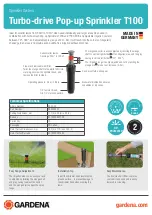
11.4.1 Second Right Hand Rule
The two right hand rules are often the best way to memorise the sensor axes and directions of positive rotation.
The first right hand rule gives the positive axis directions and is described in
. The second right hand rule shown in the figure below provides the direction of positive rotation. To use
it, point your thumb in the positive direction of that axis, then the direction that your fingers curl over shows the
positive rotation on that axis.
Figure 55: Second right Hand Rule
11.4.2 Rotation Order
When multiple axes are rotated, to imagine the final orientation the three rotations must be performed in the
order heading first, then pitch and then roll. To deduce the final orientation the unit should first be considered
level with the X axis pointing north and the Z axis pointing down. Heading is applied first, then pitch is applied
and finally roll is applied to give the final orientation. This can be hard for some people to grasp at first and is
often best learned experimentally by rotating GNSS Compass with your hand whilst watching the orientation
plot in real time on the computer.
11.5 Geodetic Co-ordinate System
The geodetic co-ordinate system is the most popular way of describing an absolute position on the Earth. It is
made up of two angles, latitude and longitude, combined with a height relative to an ellipsoid. Latitude is the
angle that specifies the north to south position of a point on the Earth's surface, reported as ± 90°. Longitude is
the angle that specifies the east to west position of a point on the Earth's surface, reported as ± 180°. The line of
zero latitude is the equator, and the line of zero longitude is the prime meridian. Latitude and longitude
represented visually to describe a position on an ellipsoid shows how latitude and longitude angles describe a
position.
v2.0
Page 124
04 Nov 2021
GNSS Compass Reference Manual • GNSS Compass Reference Information
Summary of Contents for GNSS Compass
Page 1: ...GNSS Compass Reference Manual v2 0 04 Nov 2021 ...
Page 28: ......




































